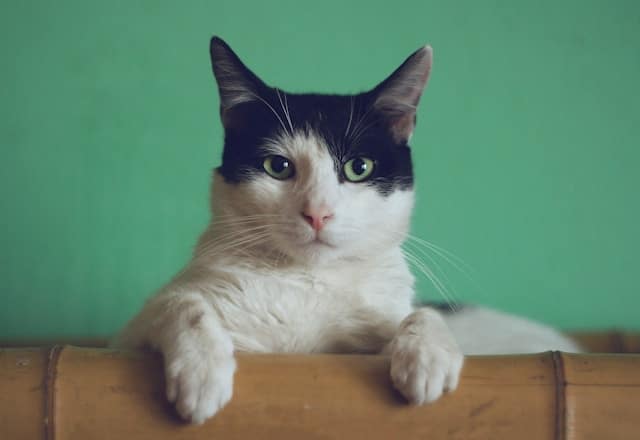What’s the Best Way to Treat Paw Pad Injuries in Active Outdoor Cats?

As pet owners, you know the joy that cats bring to your life. The playful pouncing, the soft purring, and the affectionate rubs are some of the joyful moments you share with your furry friends. But with ownership comes responsibility, and among these is the health and well-being of your pet.
In the life of an outdoor cat, injuries are not uncommon. Cats are active animals, and their paws are their primary tools for exploring and playing. One common injury cats suffer is to their paw pads. These injuries can be painful and, if not properly treated, potentially harmful. But fear not, there are ways to help your feline friend, and we’re here to guide you through the process.
Dans le meme genre : How to Effectively Use Aromatherapy for Calming Hyperactive Dogs?
Recognizing Paw Pad Injuries in Cats
Knowing when your cat is injured is the first step in providing the necessary help. Cats are stoic creatures and they often hide their pain, so it’s up to you to be observant and watch for signs of injury.
Your cat’s paws are a complex part of their anatomy. Each paw pad is covered in a thick layer of skin that protects the bone and tissue beneath. When a cat’s paw pad is injured, you may notice limping or a reluctance to put weight on the affected foot. Other signs include excessive licking of the paw, redness, swelling, or visible wounds on the paw pad.
Avez-vous vu cela : What Are the Best Techniques for Grooming a Long-Haired Guinea Pig?
In some cases, the injury could be as minor as a slight abrasion or as severe as a deep cut or puncture wound. It’s crucial to inspect the paw carefully and note the severity of the injury before deciding on the next steps.
Cleaning the Wound
Once you’ve identified a paw pad injury, the first step in treatment is cleaning the wound. This will help to prevent infection and can provide some relief to your cat.
Start by gently removing any debris from the wound. Have a vet or a second person hold your cat securely to ensure that they don’t get hurt during the cleaning process. Next, clean the wound with saline solution or an antiseptic designed for pets. Do not use human antiseptics or disinfectants as these can cause additional injury to your cat’s paw.
Remember to clean around the wound too, not just the wound itself. This will help to eliminate any bacteria that could potentially enter the wound. Depending on the severity of the wound, it might be best to consult with a veterinarian before proceeding.
Bandaging the Paw
After cleaning, a wound may need bandaging, particularly if it’s a deep cut or puncture wound. Bandaging helps to protect the wound from further damage and keeps it clean as it heals.
Using a clean and soft bandage, wrap the entire paw, including the toes. Be careful not to wrap it too tight, as this can cut off circulation to the paw. Secure the bandage with medical tape, ensuring it’s snug but not tight.
Remember, cats are not used to having their paws wrapped and may try to remove the bandage. If your cat is persistently trying to remove the bandage, a pet cone or similar device might be necessary to prevent them from reaching the wound.
Visiting the Vet
In some cases, home care isn’t enough to properly treat a paw pad injury. If the wound is deep, if your cat is in obvious pain, or if the wound shows signs of infection, a trip to the vet is necessary. Additionally, if the injury doesn’t improve within a few days of home treatment, it’s also time to call the vet.
The veterinarian can assess the wound, clean it more thoroughly, and stitch it up if necessary. They may also prescribe antibiotics to prevent or treat infection. Remember, your vet is your best resource when it comes to the health and wellbeing of your pet.
Ongoing Paw Care
Once the immediate injury has been treated, it’s crucial to continue caring for your cat’s paw to ensure it heals properly and doesn’t get re-injured.
Keep an eye on the injury, and if it’s bandaged, change the bandage regularly. Each time you change the bandage, clean the wound again to prevent infection. Keep the cat indoors as much as possible during the healing process to prevent further injury or contamination of the wound.
Regularly check your cat’s other paws too for signs of injury. By maintaining your cat’s paw health, you can prevent future injuries and ensure that your cat remains active and happy.
In the end, treating a paw pad injury in an active outdoor cat involves a combination of prompt recognition, careful cleaning, possible bandaging, vet consultation when necessary, and ongoing paw care. Remember, your cat relies on you for their health and wellbeing, so take these steps seriously and provide your pet with the best care possible.
Cat Paw Pad Injuries: Prevention and Long-Term Care
Caring for your cat’s paws doesn’t end once an injury has healed. You can take steps to prevent future injuries and promote overall paw health. This long-term care is just as important as treating the injury itself.
First, check your cat’s paws regularly. This will help you spot any injuries early before they worsen or become infected. Look for any signs of damage like cuts, scratches, or foreign objects lodged in the footpads. Smaller objects can be removed with tweezers, but for larger or deeper objects, it’s best to consult a vet.
Second, ensure your cat’s paws are clean. After outdoor adventures, gently wipe your cat’s paws with a damp cloth. This simple habit can help remove dirt and debris, reducing the risk of future injuries.
Third, keep your cat’s nails trimmed. Overgrown nails can curl back into the paw pad, causing pain and potentially leading to infection. By regularly trimming your cat’s nails, you can prevent this issue.
Lastly, provide your cat with paw-friendly environments. If possible, try to limit your cat’s exposure to rough or hazardous terrain that could harm their paws. Also, in colder months, be aware of the risk of frostbite on the paw pads, and limit outdoor time accordingly.
Remember, prevention is key in maintaining your cat’s paw health. By regularly examining your cat’s feet, keeping them clean, maintaining their nails, and being mindful of their environment, you can help prevent injuries before they happen and ensure your cat remains active and safe.
Conclusion: The Importance of Proper Paw Pad Care for Cats
Paw pad injuries in active outdoor cats are quite common. However, with a keen eye for recognizing the signs of an injury, the right knowledge on how to treat them, and preventive measures, you can ensure that your cat continues to explore and play without worry.
When an injury does occur, it’s essential to act quickly. Clean the wound, possibly bandage it, and consult a vet when necessary. Then, focus on ongoing care to prevent infection and promote healing. This includes regularly changing bandages, cleaning the wound, and keeping the cat indoors to minimize the risk of further injury or contamination.
In the long run, prevention and maintenance are key. Regularly checking your cat’s paws and keeping them clean can significantly reduce the risk of injuries. Similarly, keeping their nails trimmed and being mindful of their environment also contribute to their overall paw health.
Your cat relies on you for their health and wellbeing. Therefore, taking these steps seriously and providing your cat with the best care possible is paramount. Remember, your cat’s paws are their primary tools for exploring the world, so a little effort in paw care can go a long way in keeping them happy and healthy.
Ultimately, whether you’re dealing with a cut paw, a torn footpad, or simply seeking ways to maintain your cat’s paw health, remember that you’re not alone. Your vet is always there to help guide and advise you through any paw pad injuries or concerns.
